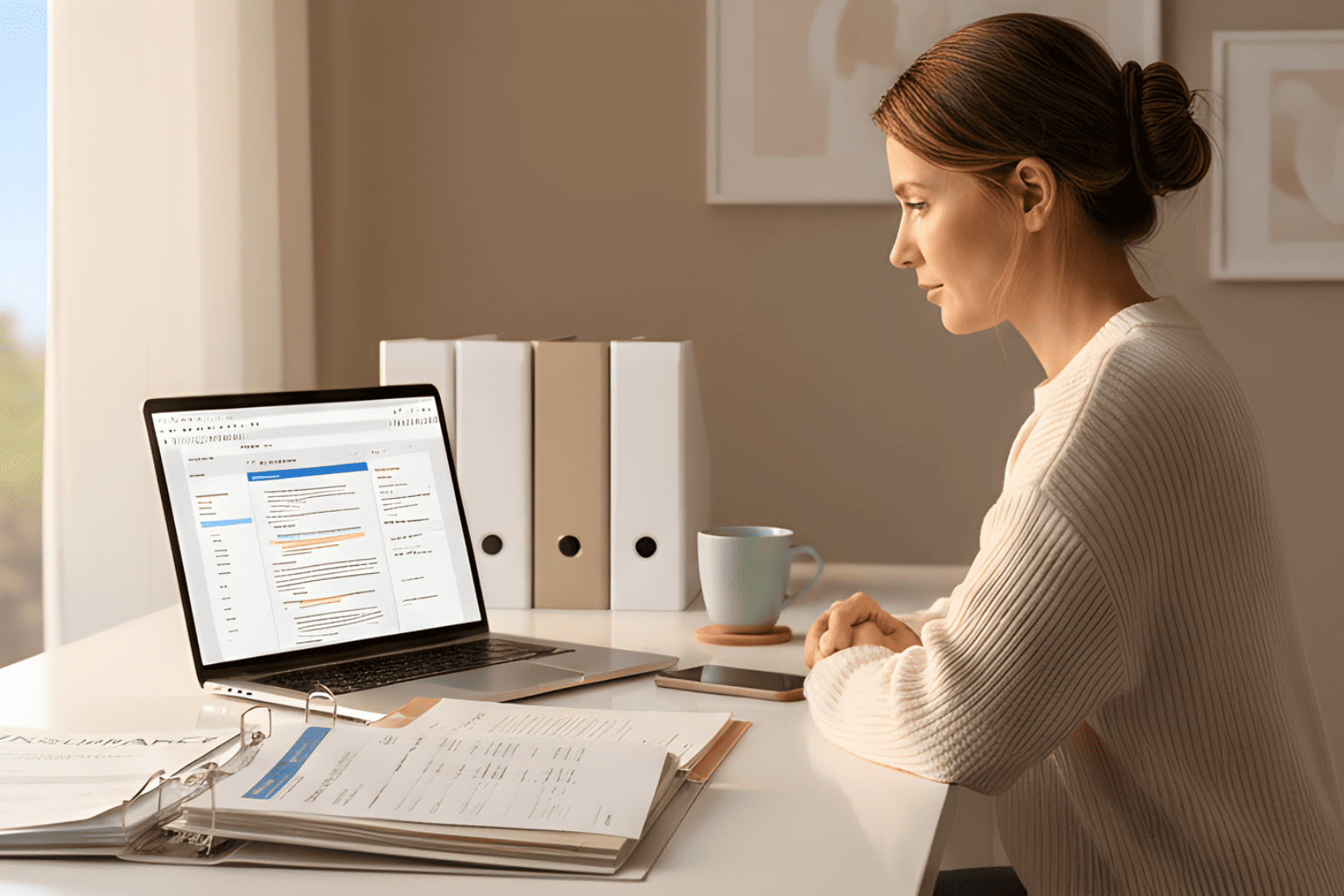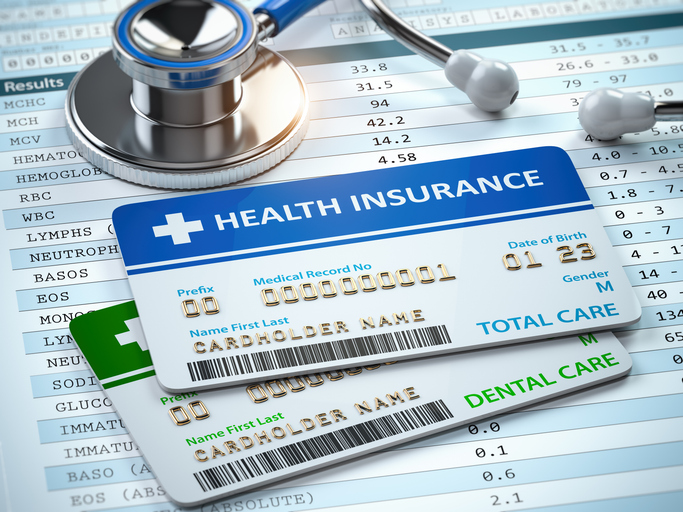Author: Gerry Acuna
Why Freelancers Need Vault for Business, Insurance and Personal Docs
December 3, 2025

Running a small business or working independently as a freelancer can be incredibly rewarding, but it also comes with a unique kind of pressure. There is no support team to handle accounts, filing, legal paperwork or insurance policies. Everything falls on one person. And when documents get scattered across laptops, email inboxes, envelopes, and drawers, that pressure doubles.
Many professionals don’t realise the value of having one organised vault for business, insurance, and even personal documents until something goes wrong like a tax review, a lost invoice, a sudden medical emergency or an unexpected client dispute. Situations like these can turn a normal week into chaos if the necessary files aren’t available when they’re needed.
The Hidden Risk Behind Scattered Paperwork
Almost every freelancer or business owner ends up collecting a long list of important documents over time:
- Contracts and NDAs
- Tax records and GST filings
- Business registration and licenses
- Insurance policies
- Personal documents like PAN / Aadhaar / passport copies
- Client invoices and payment proofs
When these are stored in different places some printed, some emailed, some saved on a mobile phone, some forgotten on a hard drive it becomes hard to track what exists and what is missing. Searching for one paper in the middle of work is stressful and wastes valuable time that could be spent earning money.
It is not just about convenience scattered documents increase the chances of financial loss, missed tax claims, denied insurance claims and even legal trouble.
Why a Single Vault Makes Life Easier
Keeping all important documents in one vault (preferably digital) can completely transform the way a business operates. A well-organised vault helps in:
Faster Access When Needed
Instead of digging through old emails or piles of files, documents are found in seconds. During tax season, project negotiations, audits or emergencies, this makes an unbelievable difference.
Confidence with Clients and Authorities
Being able to quickly retrieve contracts, invoices or payment receipts shows professionalism. It also protects the business during disputes or late payments.
No More Panic During Emergencies
If a device breaks, a document goes missing or an accident occurs, a vault ensures that everything is backed up and safely stored.
Clear Separation of Personal and Business Finances
Many freelancers mix personal and business papers by accident. Keeping them in labelled folders inside one vault keeps everything organised without confusion.
Which Documents Should Be Included?
A good vault should include every document that is hard to replace, legally important or financially relevant. For example:
Business-related documents
- Licenses and registrations
- Client contracts and project agreements
- Invoices sent and payment receipts
- Expense proofs bills, subscriptions, travel, utilities
- Bank statements and annual reports
Insurance-related documents
- Health insurance policies
- Life insurance details
- Business and asset insurance
- Renewal receipts and claim history
Personal documents
- Identity proofs such as Aadhaar, PAN, Passport
- Important legal documents
- Nominee details
Keeping everything in one vault does not mix the documents it simply allows them to be stored together but categorised, making access extremely efficient.
Digital Vault vs Physical Storage Which Is Better?
Some business owners still rely on physical files, and while that is familiar, it has limitations. Paper can be misplaced, damaged by water or fire and is hard to access when travelling or working remotely.
A digital vault has several advantages:
- Documents can be accessed anytime, even while travelling or from another device
- Multiple categories and labels reduce confusion
- Search options make it easy to locate files quickly
- Backup storage ensures documents are not lost
- Sensitive information can be password protected
For professionals who work across locations or serve international clients, digital access becomes even more valuable.
Real-World Scenarios Where a Vault Saves the Day
A secure, organised vault may feel like an optional system until the moment it becomes essential:
- A client wants to verify payment for an old invoice
- A large company payroll team requests old tax receipts for onboarding
- A medical emergency requires quick access to insurance details
- A visa form needs a scanned copy of passport and financial proof
- A GST or income tax review asks for expense records from previous years
Having everything stored neatly in one place turns stressful events into simple tasks.
A Small Habit That Leads to Big Stability
Building a vault doesn’t require complicated software or a huge investment. It only needs a habit: every time an important document arrives, store it in the vault immediately. Small, consistent organisation protects both personal and professional life in the long run.
For freelancers and small business owners, a vault is not just storage. It is preparation. It is peace of mind. It is a safety net during the uncertain moments that every business eventually faces.
Final Thought
Success in business isn’t only about skills or marketing. It is also about stability and preparedness. Keeping business, insurance and personal documents in one secure vault gives a professional the confidence to grow without fear of losing control over paperwork. With organised records, business becomes smoother, income becomes predictable and stressful situations become manageable.
Wishing You Safe and Healthy Holiday Travels
December 1, 2025

Traveling over the holidays is an opportunity to relax and reconnect with loved ones. But traveling during peak times can also be stressful. The crowds alone can cause some anxiety and concern. Last year, more than 132 million Americans travelled for the Thanksgiving weekend. By planning ahead, you can stay safe and healthy.
A survey of Motel 6 and Studio 6 found that 51 percent of holiday travelers plan to drive, compared to 13 percent who will travel by plane. It can be both easier and more affordable to drive, but according to the U.S. Department of Homeland Security, traveling by car during the holidays has the highest fatality rate of any major form of transportation.
Traveling by Car
By taking simple precautions, drivers can keep their passengers safe. “Number one: budget in extra time,” says Vicky Nguyen, a Consumer Investigative Correspondent for the Today Show. “Even just leaving 15 minutes earlier than normal can take some of the stress out of driving in general.”
Prepare in advance by doing the following:
- Complete any necessary automotive maintenance to ensure your car is ready for the road.
- Make sure you have a full tank of gas (or a full charge for an electric vehicle) the day before you leave.
- Pack the night before and aim for 7-8 hours of sleep.
- Pack water, snacks, and medicines for every passenger, including kids and pets.
- Get comfortable by adjusting your seat and preparing your navigation system before you get going.
“It also can’t hurt to map out your route and identify rest stops, gas stations, and food options,” says Stacey Barber, vice president of AAA Travel. In the case of traffic or bad weather, build in extra time or reschedule your departure. Locate lodging along your route ahead of your trip, in case you need to stop for a night.
Your emergency essentials should include a portable cell phone charger, a first-aid kit, blankets for cold temperatures, a flashlight with extra batteries, jumper cables, and spare tires.
Follow basic driving safety guidelines, including buckling up, obeying the speed limit and other road laws, giving your full attention to the road, especially in construction zones, and avoiding distractions, such as cell phone use.
Plan to take breaks, about every two hours or 100 miles, to avoid getting sleepy on the road. Short walks and stretches during breaks can also help prevent and alleviate pain associated with prolonged sitting.
If you’re driving, keep gifts and other valuables out of sight, preferably in the trunk. At rest stops and in airports, stay alert, be aware of your surroundings, and keep your belongings close.
Traveling by Plane
If you’re flying, plan on getting to the airport two hours before your scheduled departure time. “We ask travelers to pack their patience, especially during peak travel days,” says Ha Nguyen McNeill, a TSA administrator.
Book an early flight. Flights departing after 9 a.m. are twice as likely to be delayed than those scheduled between 5-8 a.m.
Airlines are also reminding passengers to bring their Real ID, which is required for flying as of early May, and to download an airline’s app to track flight updates and receive alerts.
To avoid getting sick while flying, it’s essential to maintain a healthy diet and stay hydrated for at least a few days before traveling. Pack simple, healthy snacks, such as nuts or dried fruit, and a refillable water bottle to bring with you. Keep any necessary medicine in a carry-on so that you can access it easily.
During your flight:
- Handle your own belongings as much as possible.
- Wash your hands whenever possible with soap and water, and carry hand sanitizer and antibacterial wipes with you.
- Avoid touching your face or eyes. If you have to cough or sneeze, use a tissue.
- If you’re sick, consider postponing your trip until you recover.
No one wants to spend their vacation worrying about whether or not their house is safe. By taking basic precautions, homeowners can protect their properties from becoming easy targets of theft.
“A simple step is to lock everything. Ensure all doors, windows, and entry points are locked, including garage doors and sliding glass doors,” says Kimani George of the University of Alabama Police Department. “Secure exterior doors with sturdy deadbolt locks, and leave blinds or curtains in their usual positions. Completely closed curtains can make it obvious you’re away.”
Other steps to protect your home include the following:
- Use timers on indoor and outdoor lights to mimic a routine.
- Install visible cameras on the exterior of the home.
- Ask them to collect mail or packages (or suspend deliveries).
- Arrange for lawn maintenance to avoid the look of a vacant home
- Do not share travel plans on social media.
Announcing holiday plans or posting vacation pictures on social media puts you at a security risk. “By posting pictures of your trip on social media sites, you are alerting the public that your home is currently vacant,” says George. “It is a safer option to wait until you return home before sharing the memories of your travels.”
Holiday travel can be stressful, but being prepared can help you enjoy the time away with loved ones while staying safe and healthy. With Insureyouknow.org, you can keep all of your travel documents and personal identification in one place for easy planning and smooth travels.
Newly Married? Important Insurance and Legal Documents to Save Now
November 26, 2025

Most couples spend the first weeks of marriage figuring out things like whose coffee style wins, which side of the bed belongs to whom, and how two different families do holidays. It is fun, chaotic, and full of learning. What usually doesn’t get discussed at first is paperwork. Not exactly romantic, but surprisingly important.
At some point, something small happens that reminds couples that paperwork matters. Maybe the doctor’s office asks for updated insurance. Maybe the bank asks for proof of name change. Maybe a car insurance rep needs beneficiary information right away. Moments like these make people realize how helpful it would have been to organize everything sooner.
So, here is a simple guide to make life a little easier for newly married couples.
Start with the marriage certificate
This one becomes the “key” to a lot of changes. It opens the door to updating names, insurance, bank accounts, and tax filing status. It is worth keeping the original somewhere safe and also scanning a copy so it is easy to find when someone asks for it unexpectedly.
If there is a name change, IDs need updating
Changing a last name takes more effort than most people expect. A few things usually need updating:
- Driver’s license or state ID
- Passport
- Social Security information
Scanning the updated documents helps avoid digging through drawers later.
Review health insurance
Many couples take a look at their coverage after marriage. Sometimes one partner has the better plan, or combining coverage saves money. It helps to keep:
- Current policy papers
- Digital insurance cards
- Provider phone numbers
It is amazing how often those papers are needed during stressful times.
Life insurance becomes part of the picture
No one likes thinking about worst-case scenarios, especially right after a wedding. But life insurance is an act of love and responsibility. Storing the policy and beneficiary information makes sure everything is clear if it is ever needed.
Home and car insurance too
Once couples live together or share a car, insurance companies need updated details. It is easier later if things like renters or homeowners insurance, auto insurance papers, and proof of valuable belongings are collected in one spot instead of scattered everywhere.
Financial documents and beneficiary details
Money looks different once two lives merge. Some couples join accounts. Others keep things separate. Whatever the setup, it is helpful to keep a record of things like:
- Bank info
- Retirement plans and investment details
- Mortgage or loan documents
This stuff can get confusing fast if it is not organized.
Estate planning might sound early… but it matters
Nobody wants to think about wills or medical decisions during the honeymoon stage. Still, life happens, and having things like a will or medical directive stored safely can protect the person you love most. It is one of those things you do hoping it never has to be used.
Where should everything go?
A lot of couples start out with good intentions and then end up stuffing these papers into random folders, drawers, or email attachments. The safest route is somewhere they can always access, even during emergencies, usually a secure digital vault for documents. It keeps things organized, private, and available when life throws a surprise.
A simple takeaway
Marriage brings a lot of joy and a little chaos. While sorting through insurance and legal papers might not feel urgent, it is one of those grown-up things that protects everything two people are building together. Once documents are updated and stored safely, it becomes one less thing to worry about and more energy can go back to enjoying married life.
What Happens If You Don’t Keep Your Insurance Info Updated?
November 19, 2025

Most of us buy insurance with good intentions. We sign the papers, file them away, and honestly, we don’t think much about them again. Life gets busy. Updating insurance info is the kind of task that quietly slips off the radar. But here’s the thing: life changes constantly, and your insurance doesn’t magically keep up.
If your policy stays the same while everything else in your life shifts around, you might end up with coverage that doesn’t match your situation anymore. And that usually shows up at the worst possible time.
Why Keeping Info Updated Actually Matters
Insurance companies depend on accurate details. They decide coverage and pricing based on the information you gave them at the start. If something meaningful changes and you don’t tell them, the policy may not reflect reality anymore.
Think about how often little changes happen: moving to a different place, adding someone new to the family, buying things you’d be upset to lose, fixing up your house, or even having changes at work. None of these moments seem “insurance-worthy” at the time, but they actually matter.
What Could Happen If Nothing Gets Updated
A lot of people assume that as long as premiums are paid, everything is fine. Unfortunately, insurance doesn’t exactly work that way.
1. Claims Might Not Go Smoothly
If something goes wrong and you file a claim, the insurer will check whether your information matches your real situation. If they find a big difference, the claim might get delayed, reduced, or rejected. For example, if your home is worth more because of renovations and you didn’t update the policy, the payout probably won’t cover the full damage.
2. You Might Not Have Enough Coverage
People often don’t realize their coverage is outdated until something happens. Maybe your family has grown, or you’ve bought more valuable items. A policy that once fit perfectly might not come close now.
3. The Policy Could Be Cancelled
Insurance companies expect major details to be accurate. If something important wasn’t updated, they can cancel the policy. In rare cases, they may even say it was never valid.
4. Renewal Might Become Expensive
Sometimes outdated details cause confusion during reviews. Even if the claim goes through, renewal might come with a higher price tag.
5. Stress Piles Up When You Least Want It
Insurance is supposed to offer relief during stressful times. Outdated information can turn that relief into more stress, more paperwork, more delays, and more frustration.
Things Worth Reviewing From Time to Time
It helps to check these once in a while:
- Where you live
- Changes in your family
- Any expensive new purchases
- Home improvements or upgrades
- Vehicle changes or new drivers
- Major health or job changes
- Beneficiaries
A simple yearly check is enough for most people.
Easy Ways to Keep Everything Updated
You don’t need to make this complicated. A few easy habits can help:
- Glance over your policies once a year.
- Whenever something big happens, just send a quick update.
- Keep all your insurance documents in one place so you don’t forget what you have.
- Make a short list of things that typically change over time.
- Ask the insurer when you’re unsure; they’re used to these questions.
Final Thoughts
Insurance is meant to support you when life gets tough, but it can only do that if the information behind the policy reflects your current situation. When details sit unchanged for too long, the coverage weakens and sometimes disappears when you need it most.
A few minutes of updating here and there can save you from a lot of trouble later. It doesn’t take much, but it makes a big difference when life throws something unexpected your way.
Coping After a Cancer Diagnosis: Finding Strength, Clarity, and Support
November 15, 2025

According to CDC data, nearly 39% of men and women will be diagnosed with cancer at some point during their lifetime. Finding out that you or a loved one has cancer can come as a shock and bring with it feelings of fear and anger. One challenge to treatment is that these emotions can make it difficult to process all of the information the doctor is presenting. Research shows that when emotions are high, a person’s decision-making ability is hindered, making it hard to choose a treatment plan.
Here are ways to help you cope after a cancer diagnosis, so that you can make the best decisions about your care.
Get the Facts
Gather as much information on your condition as you can. Not only will this help you make treatment decisions, but it can also feel empowering to become informed. Write down questions for your healthcare team as you think of them.
Questions to ask include:
- What kind of cancer do I have?
- Where is the cancer located?
- Has the cancer spread?
- Is this a curable form of cancer?
- What are my treatment options?
Bring a close family member or friend to your appointments for support and a second set of ears to help you remember what the doctors say.
Some people want all the facts while others want to let their healthcare providers make treatment decisions. Think about what works best for you before your appointments.
Be Honest About Your Well-Being
Now is the time to keep the lines of communication open between your doctors and loved ones. You may end up feeling alone if you sense that people are trying to protect you from your diagnosis, or if you try to be strong and hold in your feelings. Instead, be open and honest with everyone about your condition and what you’re feeling.
One in four individuals experiences depression and anxiety after a cancer diagnosis, so speaking up and seeking support early can make a meaningful difference.
“Education can be a powerful resource,” says Cynthia Brown, a breast cancer oncology nurse at Chester County Hospital in Pennsylvania. “Knowledge is power, and when you are more aware of the physical and mental symptoms you can experience throughout your cancer treatment, you can feel more confident in your ability to manage them, and be less afraid of the unknown.”
Accept Help When Offered
Let your loved ones help with errands, household tasks, meals, and taking you to appointments. It helps those you love to care for you and can be a way for them to cope during this difficult time.
To prevent those closest to you from burning out, accept help from anyone who asks if there’s anything they can do. Your loved ones will appreciate the extra help.
Some say that putting their lives in order helps them feel more in control of their well-being. Being involved in your treatment plan, keeping track of appointments, and making lifestyle changes are all things you can control.
While you can’t control every thought, you can choose which ones not to dwell on. Instead of worrying, for example, pay attention to the parts of life that bring you joy.
“As much as I’m in my own head thinking, ‘Cancer, cancer, cancer,’ and spiraling, my kids still have school pickup and drop-off, and they still want cuddle time,” says Stephanie Wysaski, a 35-year-old mother diagnosed with breast cancer. “I just didn’t have time to worry. Life doesn’t stop.”
Reevaluate Your Priorities
Receiving a cancer diagnosis can be a turning point in an individual’s life. Many people experience a new perspective and examine what they’ve been putting value on. Find more time for what matters most to you, and cancel everything that doesn’t align with your goals. Be open and honest with your loved ones about any changes you may be making and explain why.
Even when you don’t feel well, healthy lifestyle choices will constantly improve your energy level. Eating a nutritious diet, getting enough rest, and continuing to exercise as much as you can will help with the stress and fatigue that come with cancer and treatment. Setting a schedule and sticking to a routine helps manage daily exercise, getting enough sleep, and preparing healthy meals.
Expand Your Circle
It can be hard for people who don’t have cancer to understand precisely what you’re going through. That’s why talking to others in a similar situation can be so helpful. Cancer survivors can share their experiences and tell you what to expect during treatment.
You can try talking to someone you already know, like a friend or family member who has had cancer, or join a support group. To find a group, ask your healthcare provider or contact your local chapter of the American Cancer Society.
Care For Caregivers
The effect of a diagnosis can affect everyone in that person’s life, creating a ripple effect through families and communities. Seeking support through counseling or a caregiver support meeting can provide relief and guidance during a difficult time. Caregivers must take time for their own well-being and remember that it’s essential in caring for their loved one too.
“If someone in your life has been diagnosed with cancer, it’s okay to take time to process your feelings as well,” says Brown. “Those emotions are still important—even if the diagnosis isn’t yours. You may be worried for your loved one or angry about the disease. And if you are providing care for this person, you may experience feelings of stress or burnout.”
You may utilize Insureyouknow.org to organize your affairs, including finances, medical records, treatment, plans, and new schedules. Taking care of what you can control will eliminate unnecessary stress during treatment and recovery.
Moving Into a New Home? Important Documents to Update and Store
November 12, 2025

The day you move into a new home is always a blur. There are boxes everywhere, someone’s hunting for the screwdriver, and the Wi-Fi isn’t working yet. Between excitement and exhaustion, paperwork usually ends up in a pile somewhere, the “I’ll deal with it later” pile.
That pile matters more than it seems. Hidden inside are the documents that prove ownership, protect your investment, and make sure you’re covered if life throws a surprise your way. Spending even half an hour getting it sorted now can save weeks of hassle later.
Here’s an easy way to stay ahead of it all.
Step 1: Collect the Home Documents
Start with the basics: anything connected to the property itself.
The deed, the lease, closing papers, inspection reports, property taxes, the list’s not short, but every one of those pages has a job to do.
Keep them together. Snap photos or scan copies and upload them to a secure place such as InsureYouKnow.org. Paper can get lost, wet, or tossed out by mistake. A digital backup doesn’t.
Step 2: Update Every Insurance Policy
It’s easy to forget how many places your address lives: homeowners, renters, car, health, even life insurance. If you’ve moved, they all need an update.
A change of address sometimes shifts coverage or premiums. Check each policy, make sure everything looks right, and store a copy in your vault. When you actually need those papers, you won’t have to dig through drawers.
Step 3: Review Finances and Bills
Moving tends to scatter money trails. One bank has your old address, a credit card statement goes missing, and a subscription quietly keeps charging the wrong account.
Before things snowball, log in to each account, banks, credit cards, utilities, and loan providers, and double-check that your information’s current. Grab a recent statement or two and save them. Come tax season, you’ll be glad you did.
Step 4: Fix the ID and Legal Stuff
This is the least exciting part, but it matters. Out-of-date identification can make the simplest tasks harder.
Head to the DMV, update your license, change your voter registration, and check your vehicle paperwork. If you’ve moved to a different state, renew your passport details too. Take a quick photo of each ID and tuck it safely into your digital folder, one less worry if a wallet ever goes missing.
Step 5: Round Up Family and Pet Records
Families (and pets) come with paperwork of their own: school transcripts, vaccination cards, medical histories, and adoption or license documents.
Put them all in one place. Upload copies so you can reach them instantly when someone needs a school form or a vet asks for proof of shots. It’s one of those tiny habits that saves time again and again.
Step 6: Check Estate and Emergency Documents
A new home changes the big picture. If you own more now than before, or live in a different state, some legal documents might need attention.
Look at your will, trust, and power of attorney. Make sure beneficiaries are still correct and that addresses match. Upload those to your vault and share access only with the people you absolutely trust. That small act can spare family members confusion later.
Step 7: Why Digital Storage Beats a Drawer of Folders
Paper doesn’t last forever. It fades, tears, and somehow always disappears when you’re in a hurry. Digital storage, especially a secure platform like InsureYouKnow.org, keeps everything in one spot, encrypted and easy to reach from anywhere.
You can label folders, set reminders for renewals, and grant limited access to family or advisors. It turns chaos into order, quietly, efficiently, without any stress.
A Quick Reality Check
Moving is a mix of energy, emotion, and endless details. Once the boxes are gone and the house starts to feel like home, take an hour, grab that pile of paperwork, and go through it.
Scan, upload, label, done. Then forget about it for a while.
It’s not the glamorous side of homeownership, but it’s the one that keeps everything running smoothly. A little organization now means fewer surprises later, and that’s worth more than any new piece of furniture.
How to Choose a Medical Power of Attorney and Stay Prepared
November 6, 2025

A few years ago, a close friend of mine went through something that completely changed how I look at “being prepared.” Her dad had a stroke while working in the garden. One minute he was watering plants, the next, he was in the hospital, unable to speak. The doctors were asking who could make medical decisions for him, but no one had an answer. Everyone froze.
It was heartbreaking to watch. Her mom was in shock, her siblings were arguing, and everyone was scared. Nobody knew what he would have wanted.
That day taught me something that I’ll never forget. Planning ahead isn’t just about being responsible. It’s an act of love. And that’s exactly what a Medical Power of Attorney is all about.
What a Medical Power of Attorney Really Means
A Medical Power of Attorney (MPOA) sounds like a complicated legal thing, but it’s actually simple. It’s a document that lets you choose someone you trust to make healthcare decisions if you can’t.
That person, your agent, doesn’t suddenly take over your life. They only step in if you can’t speak for yourself. Their role is to protect your wishes and make sure what you want actually happens.
It’s one of those things we tend to put off, but once it’s done, it brings a quiet kind of comfort. You know things will be okay, even if you can’t explain what you want in the moment.
Why It Matters
If you don’t have a Medical Power of Attorney, hospitals usually turn to whoever’s nearby or follow state laws about next of kin. That can work, but it can also cause a lot of tension. In stressful moments, people don’t always think clearly. They guess, they argue, they panic.
Having an MPOA avoids all that. It gives doctors one clear person to speak with and gives your family direction when things feel uncertain. It’s a simple form, but it can prevent a lot of heartache later.
How to Choose the Right Person
Choosing your agent isn’t about who’s closest to you. It’s about who knows you best. The person you trust most doesn’t have to be family. It could be a friend, a sibling, or someone who simply understands you.
Here’s what to think about:
- Who stays calm under pressure?
- Who knows how you feel about medical care and quality of life?
- Who will listen to doctors carefully and ask good questions?
- Who will do what you want, even if others disagree?
Once you decide, talk to them. It doesn’t need to be formal or serious. Maybe just bring it up during a car ride or while cooking dinner. Tell them how you feel about certain treatments or what kind of care you’d want. These honest conversations matter so much more than any form.
Keeping Your Documents in Order
Once your form is signed, keep it somewhere easy to find. In an emergency, no one wants to dig through stacks of paper.
Here’s what to keep together:
- Your MPOA form (signed and dated).
- A Living Will or Advance Directive describing your medical preferences.
- A HIPAA release form so your agent can speak with doctors.
- Health insurance cards and policy info.
- Emergency contacts for family and doctors.
- Photo IDs for you and your agent.
I like to keep mine in a labeled folder at home and another copy saved online. It’s one of those “just in case” things that saves everyone stress later.
Why Digital Storage Helps
Paper gets lost. It gets packed in a box or tossed by accident. That’s why having a digital copy is smart.
A secure site like InsureYouKnow.org makes it easy to upload and store important documents safely. You can label them, share access with your agent, and know that if you ever need them, they’re right there. It’s simple, private, and safe.
It’s not about being tech savvy, it’s about being practical.
Keep It Updated
Life changes. People move, relationships shift, new doctors come into your life. Once a year, take five or ten minutes to check that your MPOA and other forms are still up to date.
It doesn’t take long, but it gives you peace of mind that everything’s current.
A Final Thought
Setting up a Medical Power of Attorney isn’t about expecting bad things to happen. It’s about kindness, for yourself and the people who love you.
Once it’s done, you can stop worrying. You’ll know that, no matter what happens, your family won’t be left guessing. They’ll already know because you cared enough to prepare.
It’s not just a document. It’s peace of mind, and maybe one of the most loving things you can do.
Updating Insurance and Documents During Major Life Changes
October 30, 2025

Life Keeps Moving
A new job, a move overseas, or the day someone finally retires all sound exciting. In the middle of packing boxes or filling out onboarding forms, it’s easy to forget the quieter side of change: the policies, records, and bits of paperwork that keep daily life running smoothly.
Missing an update here can cause small but annoying problems later. A wrong address on an insurance file, an expired policy, or a forgotten beneficiary can slow down a claim when it’s really needed
When Work Life Shifts
A new role often means new benefits, different coverage, and sometimes a short gap between plans. People tend to assume everything carries over automatically, but that’s rarely the case.
- Before leaving a company, check the exact date the old health plan ends.
- Ask the new employer when coverage begins; if there’s a gap, arrange a temporary plan.
- Look at personal policies to be sure the coverage amount still fits current income and family needs.
- Update names, addresses, and phone numbers across all accounts.
- Keep the older paperwork since it’s proof if a claim from that period ever comes up.
It’s a small chore during a busy week, but it prevents confusion later.
When a Move Crosses Borders
Relocating brings excitement, but every country plays by its own rules when it comes to insurance and legal documents. A policy that worked perfectly at home might be useless once abroad.
Before boarding the plane:
- Ask the insurer about international coverage and buy a global or expat plan if necessary.
- Re-draft wills or powers of attorney so they follow local laws.
- Tell banks and pension providers the new address since some freeze accounts if mail bounces back.
- Store digital copies of important papers in a secure online vault and let one trusted person know how to reach them in an emergency.
It takes a few emails and signatures, but it can save a lot of time and stress once the move is complete.
When Retirement Begins
Retirement changes how income and coverage work. Employer insurance usually ends, and new health options need to be arranged.
- Compare health plans designed for retirees or seniors.
- Review life insurance since sometimes a smaller policy makes more sense now.
- Gather pension statements and investment reports in one folder.
- Make sure wills and executors’ details are up to date.
- Keep digital and printed copies in one clearly labeled place.
A tidy file today makes life much easier tomorrow for both the retiree and their family.
Quick Review Checklist
A few questions worth asking after any big change:
- Does current insurance still cover what’s needed?
- Are beneficiaries correct and easy to contact?
- Are legal and financial papers current?
- Is everything backed up securely?
- Has someone trustworthy been told how to access it?
If each answer is yes, everything is already in good shape.
Keeping It All Together
Loose papers and forgotten folders can turn into a real headache. A secure digital vault, such as InsureYouKnow, keeps all records in one encrypted space that can be opened from anywhere. It’s simple, private, and designed for moments exactly like these: job changes, relocations, and retirements.
Final Thoughts
Big life transitions come with excitement and responsibility. Updating insurance and personal documents may not feel urgent, but it protects the plans built over years of effort. With organized records and the right digital tools, the next chapter, wherever it leads, starts off clear and worry-free.
Seasonal Insurance Check-Up: Keep Your Coverage Up to Date
October 29, 2025

If you’ve ever opened an old folder and thought, “Wait, when did I even file this?”, you already get the point. Insurance paperwork has a way of sitting quietly until life outgrows it. People check their policies once a year, feel responsible for a minute, then forget about them. Sounds familiar, right?
Life, though, doesn’t wait. A new job pops up, someone moves, a baby arrives, or maybe there’s a home remodel that changes everything. Those small shifts can make old coverage feel out of step. By the next annual review, it’s easy to realize things don’t quite fit anymore.
Life Changes Faster Than Paperwork
Insurance is supposed to protect what matters now, not what mattered last spring. But most people never notice how fast their details drift. Maybe the car value has dropped, or a phone number changed, or the policy still lists an address that no one lives at. Tiny errors, but they matter when a claim appears.
A quick seasonal review keeps things real. It’s like glancing at your pantry before heading to the store, fast, practical, and you avoid buying what you already have.
How to Do a Seasonal Review Without Losing a Weekend
Step 1. Gather your stuff.
Pull together every policy: car, home, health, life. Keep them in one folder, digital or paper, so you’re not hunting later.
Step 2. Check the basics.
Look at names, addresses, contact numbers, and nominee info. If something looks off, fix it.
Step 3. Match it to real life.
Bought something big? Changed jobs? Maybe started freelancing? Adjust the coverage so it actually fits.
Step 4. Note payments and renewals.
Set a quick reminder on your phone. Late payments sneak up quietly.
Step 5. Keep copies safe.
A cloud folder and one printed set usually do the trick. Tell someone close where they are.
When to Check Even Sooner
Some moments don’t wait for the next season. Big life changes mean the file needs a look right away:
- Marriage or separation
- New house or sold property
- Moving cities
- Starting a business
- A new baby or dependent parent
If your life just shifted, your coverage should shift too.
Why Bother?
People who do this regularly sound calmer when things go wrong. They don’t waste time searching or wondering what’s covered. The habit keeps surprises small.
Here’s what they get out of it:
- Current coverage: Nothing outdated hiding in fine print.
- Fewer claim issues: Information is already right.
- Possible savings: You catch overlaps before paying twice.
- Less stress: Everyone knows where everything lives.
A little check four times a year adds up to peace of mind.
Make It Stick
Pick a date that already matters, your birthday month, tax season, the start of summer. Mark it as “insurance check-up” and actually do it. Once or twice and it’ll feel automatic.
The Bottom Line
Insurance only works when it keeps up with your life. A seasonal check-up isn’t overkill; it’s common sense. Fifteen minutes now can save weeks of frustration later, and that’s a trade anyone would take.
ACA Marketplace: Understanding the Upcoming Insurance Hikes
October 28, 2025

Imagine logging in to renew your health-insurance plan this November and discovering your monthly premium has nearly doubled — all because Congress couldn’t agree to fund the tax credits that have quietly kept your coverage affordable. That’s the stark reality for millions of Americans enrolled in the health insurance marketplaces under the Affordable Care Act (ACA).
Under the ACA, individuals and families who do not get health insurance from an employer or through a public program can shop at a federal or state-based “Marketplace.” Insurers offer plans in metal tiers (Bronze, Silver, Gold)—with varying premiums, deductibles, and out-of-pocket costs. What keeps many of these plans affordable is the federal premium tax credit. If you qualify (mainly based on income as a share of the federal poverty level), you receive a subsidy that reduces the monthly premium you pay.
Because of this subsidy, many enrollees pay only a modest portion of what might otherwise cost thousands of dollars. The Kaiser Family Foundation (KFF) found that thanks to the enhanced tax credits, an individual making $28,000 “will pay no more than around 1 % ($325) of their annual income towards a benchmark plan.” The system ties a person’s share of premium costs to their income, and the subsidy covers the rest. This critical safeguard has kept coverage within reach for millions of lower-income Americans.
Why Subsidies Are in Danger of Expiring
The wrinkle: the enhanced subsidies many people now rely on are temporary unless Congress renews them. These enhancements were introduced by the American Rescue Plan Act in 2021 and extended under the Inflation Reduction Act of 2022. They expanded eligibility (including households earning more than 400% of the poverty level) and reduced out-of-pocket costs for individuals. But unless renewed by year’s end, they sunset at the end of 2025.
Even more urgent: insurers are already filing their proposed 2026 premiums, assuming no renewal of the enhanced tax credits. KFF reported that enrollee net premium payments could increase by 114 % on average—from about $888 in 2025 to about $1,904 in 2026—if the enhanced credits expire.
What People with Low Income Will Face
For low- and moderate-income Americans who depend on the marketplaces, the expiration of enhanced subsidies is more than theoretical—it’s a budget-breaker.
If subsidies are eliminated, many enrollees will see their monthly premium contributions skyrocket. KFF’s analysis shows that without the enhanced tax credits, average annual premium payments for subsidized enrollees would more than double. Some households will lose eligibility altogether. For people earning above 400 % of the poverty level, that subsidy cliff means they go from some assistance to none. KFF explains that “people with incomes over four times the poverty level will no longer be eligible for any financial assistance” if the enhanced credits expire.
The rate increases compound the effect: insurers are proposing median premium hikes of around 18 % for 2026. Those who are already barely making ends meet may find the new premiums impossible. One enrollee in Florida told Health News Florida that she’s already struggling to cover other rising costs. “The rent is going up. The water bill is going up,” said the Florida resident. “I cannot afford a premium hike.”
A missing subsidy cushion means not just higher premiums but a greater risk of losing coverage altogether. As Jason Levitis, Senior Fellow at the Urban Institute, explained, “If you have fewer subsidies, you’re going to have less health coverage and less health care.”
Why Enrollment Has Grown Recently
Enrollment in the marketplaces has surged in recent years, and the subsidy enhancements are a significant reason. Before the enhancement period, around 11 million people used the marketplace; now more than 24 million are enrolled.
Several factors have driven the growth. The enhanced tax credits increased eligibility and lowered what many paid, making coverage far more accessible. Improved outreach and usability—especially as state-based marketplaces matured—helped consumers find and keep plans more easily. At the same time, rising costs in employer-based coverage pushed more people to shop for plans individually. According to KFF, the enhancements cut annual premium payments by an estimated 44 % (about $705) for many subsidized enrollees. “The enhancements made it easier for millions of people to afford health coverage,” said Larry Levitt, Executive Vice President for Health Policy at KFF. “If they expire, we could see those gains wiped out almost overnight.”
In short, more help meant more people using the marketplace. The flip side is that less help could mean fewer people—and higher premiums for those who stay.
What’s at Stake
At the core of the current federal budget impasse (which led to the shutdown beginning October 1, 2025) is a fight over whether to extend the enhanced subsidies. Democrats insist that any funding deal must include the subsidy extension, arguing that letting them expire would cause a major affordability crisis. Republicans are pushing for reopening the government without tying the subsidy question directly to the budget deal, saying the issue should be negotiated separately.
From a consumer standpoint, the stakes are enormous. Without subsidy extensions, millions may lose assistance, face steep premium increases, or drop coverage altogether. KFF’s district-level data show that premiums would at least double in many parts of the country if the enhancements are not renewed. Rising premiums could also cause healthier enrollees to opt out, worsening the insurance risk pool and pushing rates even higher in subsequent years.
For families already squeezed by inflation and rising living costs, this would trigger an affordability crisis. “The cost of health insurance is never going to be low enough for a person who makes just above poverty to be able to afford it,” said Cynthia Cox, Director of KFF’s Program on the Affordable Care Act. “If you want that person to have health insurance, then there needs to be financial assistance.”
If Congress doesn’t act, many Americans will pay far more—or lose coverage altogether. As open enrollment begins, millions will face difficult choices about whether they can keep the coverage that has protected them for years, and whether Washington will act before the bills come due.
Insure You Know
Before you finalize your renewal or new plan selection, it may help to check out Insure You Know — a secure, central place where you can store and manage the critical information your family will need (insurance details, plan documents, contact numbers, and more). Taking a few minutes now to upload your coverage information ensures you’re ready for whatever changes lie ahead, and helps keep everything organized so you’re not scrambling when the numbers on your bill jump or the policy rules shift.
